59% of the world’s population defecating in the open live in India. The sanitation situation is far worse in urban informal settlements. One such settlement is Shivaji Nagar, a neighbourhood located in the lowest-ranked ward of Mumbai. Communities in Shivaji Nagar have lived with toilet scarcity for decades. They face multiple challenges related to sanitation due to systemic marginalisation and strategic placement beside Asia’s largest landfill.
A study, taking stock of sanitation in Shivaji Nagar, was released recently by Apnalaya, a non-profit organisation working on issues of the urban poor. The NGO has been working in Shivaji Nagar for many decades.
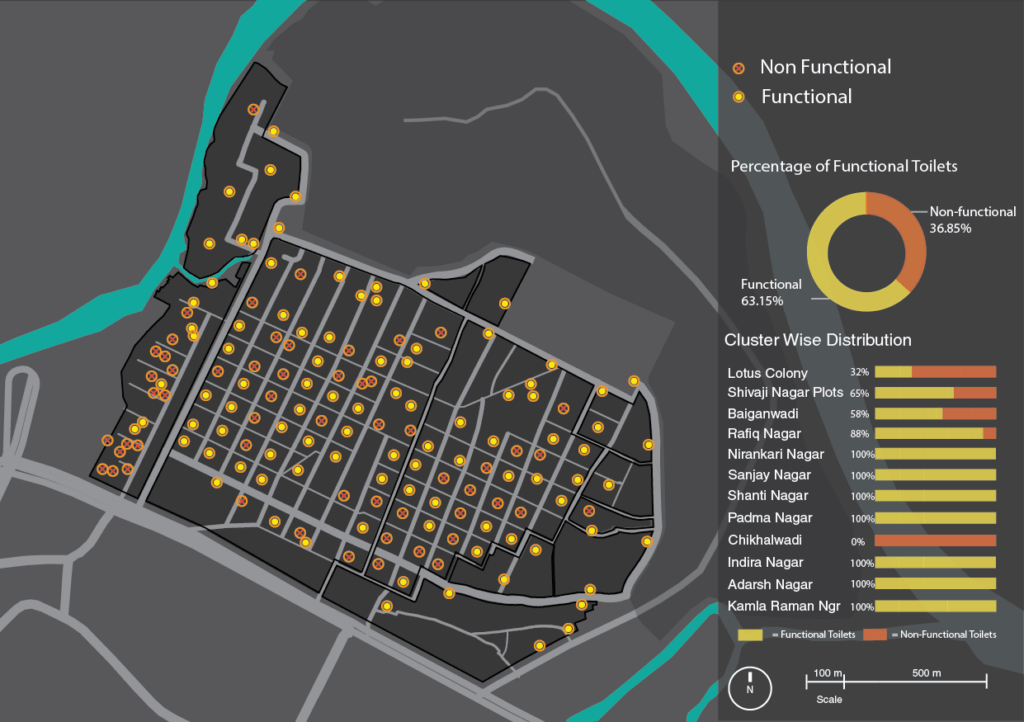
Earlier studies by Apnalaya and others have established the settlement’s uneven toilet coverage and inadequate toilet seats. The recently released report “Unpacking the Complexities of Sanitation in Shivaji Nagar” reiterates the same while explaining the status of community toilets and sanitation infrastructure.
In Shivaji Nagar, out of 152 community toilets, only 96 are functional, 63.15%. Crowded toilets impact the condition of sanitation infrastructure and lead to increased risk of various diseases like diarrhoea, intestinal infections, and skin ailments.
The study, conducted between March and November 2022, included a combination of community-led and online surveys, rapid assessments, focused group discussions, key informant interviews and case studies to investigate the status of infrastructure, the complexities of governance, maintenance, functionality and community concerns.
Read more: What will beautification do for slum population of M-east ward?
Square pegs in round holes: Sanitation infrastructure in Shivaji Nagar calls for transformation
Shivaji Nagar is not a homogenous settlement. It has the government built colony, often referred to as ‘plots’ and peripheral clusters that largely developed without the government’s support . Factors affecting sanitation infrastructure are different in various areas.. While the neighbourhood has been at the margins of most development schemes, the peripheral clusters have been the most neglected.
Development of the government colony or plots has taken place under the sites and services scheme, with provision of the bare minimum infrastructure needed for habitation. The roads and the community toilets were built by the government and the residents had to construct their houses.
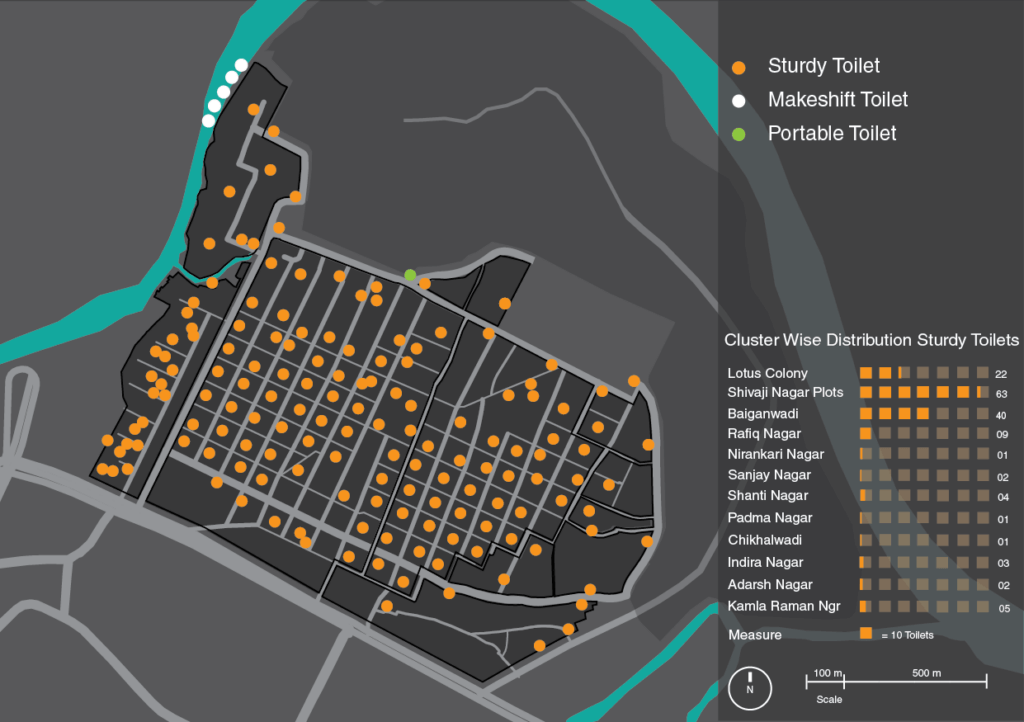
The site & services scheme occupies 8,23,139 sq.m and has 125 toilets. In comparison, the periphery, which covers 4,37,492 sq.m, almost half of the area of its counterpart, has only 27 toilets.
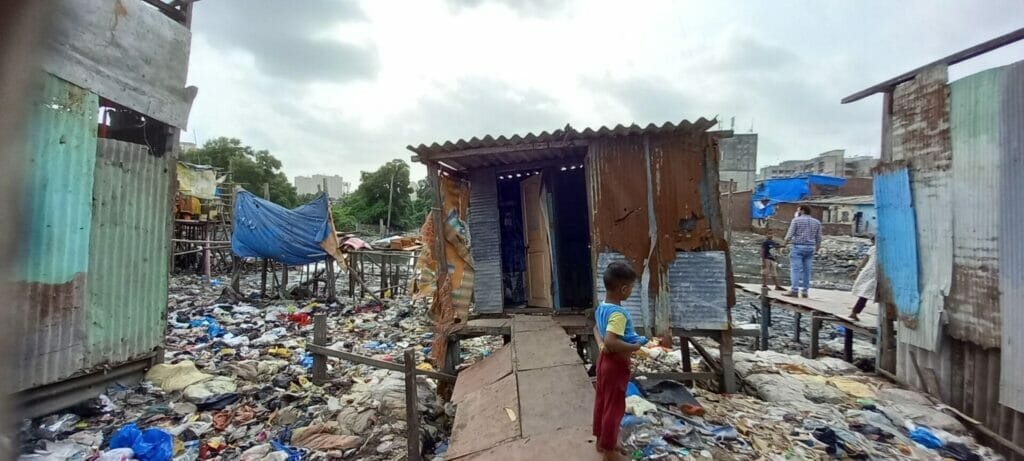
Residents in the peripheral clusters have to rely on makeshift toilets that were built along the creek, with no access to services. These toilets were constructed at the end of lanes and the cost of maintenance was shared among the users. From an infrastructural perspective, these toilets were unsafe, as they often collapsed, leaving residents traumatised after the accidents.
Study findings revealed that out of the 152 community toilets in the entire area, 21.71% were under construction and non-operational. 5.26% were old and dilapidated, and 9.87% were newly rebuilt but not open to the community. Some of the reasons provided by the community were the pending formation of the Community Based Organisations (CBOs) and the wait for election time to inaugurate toilets.
In most cases, the CBOs take up the responsibility of toilet operation and maintenance, coordinating with the local government bodies, NGOs and toilet caretakers. A huge number of these non-functional toilets were in the site and services scheme, and yet most new toilets are sanctioned in the same area.
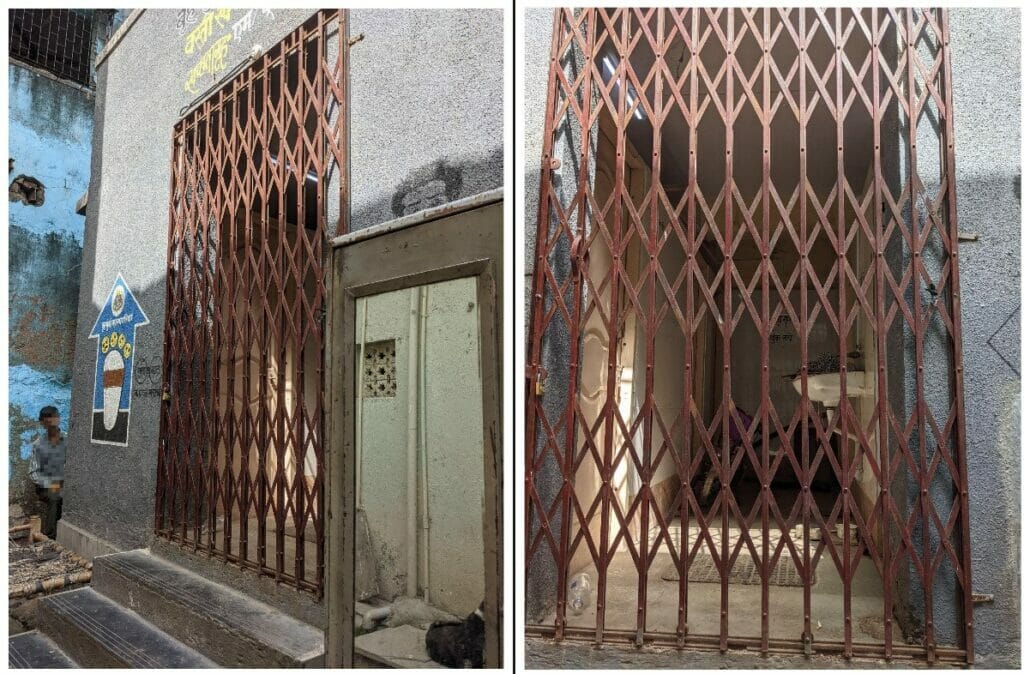
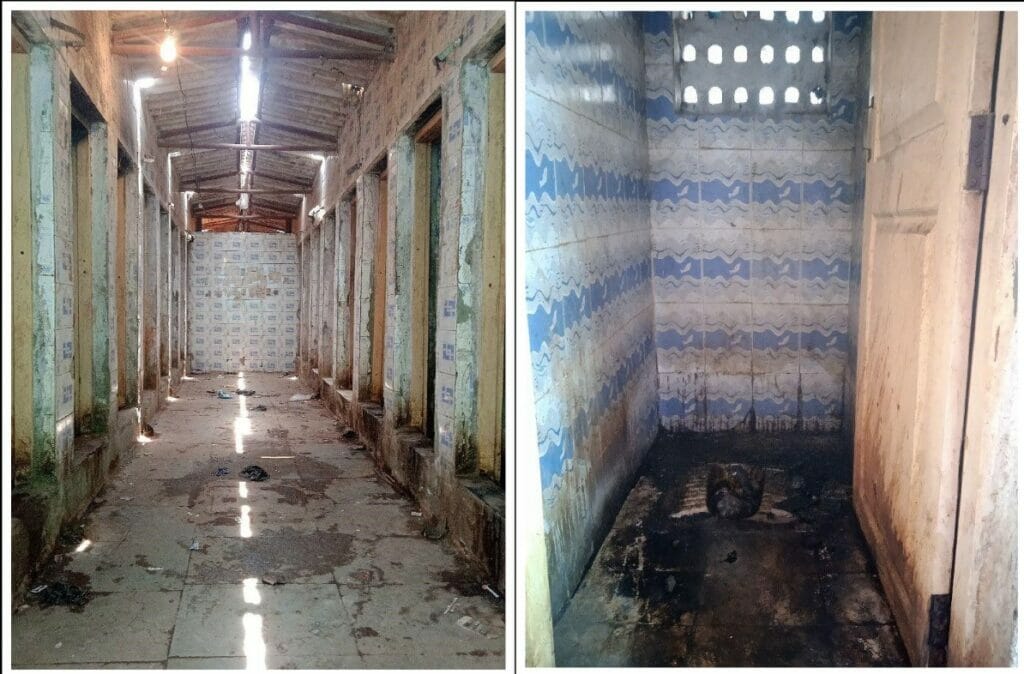
One of the distressing findings was that after more than 50 years of housing development, most toilets still lacked sewage connections, and a considerable population still accessed water through informal channels. Only 4.2% were connected to sewers, 7.3% of toilet outlets were directly connected to stormwater drains, and 88.5% depended on containment tanks.
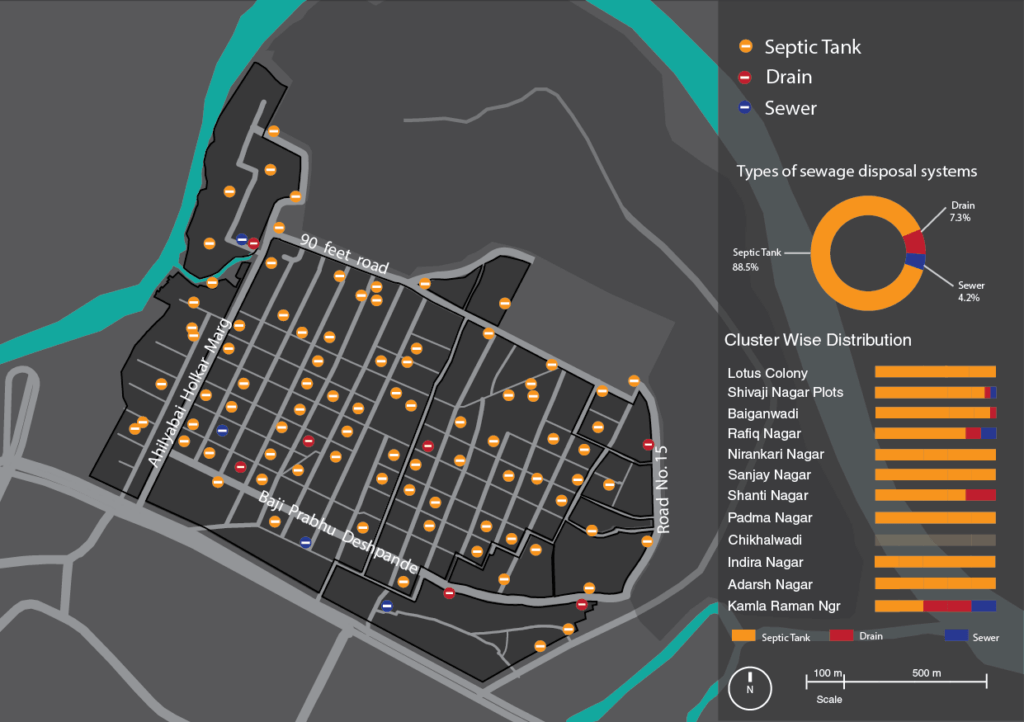
Access to electricity in the area is through both formal and informal channels. 10 toilets had no electricity due to the complex arrangements between the government, private contractors and community leaders.
About 78% of community toilets had access to a water pipeline, whether formal or informal, 12.5% relied on borewells, and 9.38% of the toilets had no water supply and had to procure water from private tankers or carry buckets from their homes. Residents and toilet caretakers complained that the water quality in the area is poor, especially from the borewells resulting in skin diseases and infections.
Read more: Money allocated, plans made and yet public toilets are not built in Mumbai. Here’s why.
Addressing the sanitation crisis
The accessibility of toilets is essential in guaranteeing the right to sanitation. Some of the factors impacting accessibility are operational hours of toilets, safety concerns, gender ratio of toilet seats, and aspects related to the inclusivity of vulnerable groups such as transgender communities, the elderly and persons with disabilities.
Shivaji Nagar’s streets and all community toilets are woefully inadequate when it comes to catering to these groups. Out of the 96 functional toilets, only 52 had western WCs, with a total count of 87 seats.
Sanitation and gender justice
Most women and transgender people expressed safety concerns while using community toilets. The overall ratio of men to women toilet seats is 55.2%:44.8%, whereas the SBM guidelines recommend a higher percentage of female toilets, one seat for 35 men and one for 25 women.
The majority of the toilets start opening at 5 AM and are open till 12 AM. The number of available toilets reduces drastically at night, with only five 24-hour toilets. For a neighbourhood where many residents rely only on community toilets, unavailability at night is a big issue.
Citizen participation in maintenance of community toilets
While the overall situation seems grim, there are a few successful toilet examples where the community was part of the design, construction and maintenance processes. This had a positive impact on cleanliness and governance of toilets.
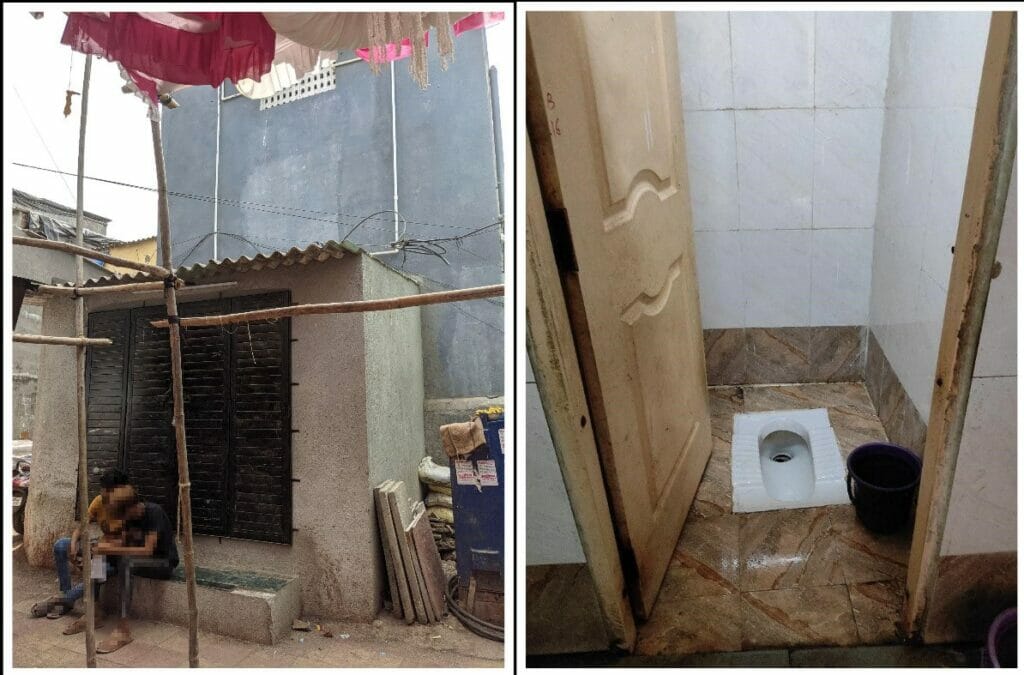
During the reconstruction of the toilet in the figure above, a ritual bathing room for the deceased was added based on the demands of the residents. This room is also used for other community activities like vaccination camps. Another example is a toilet with a multipurpose space on the top, which was used as a creche for children, stitching and salon classes, and resting space for the toilet caretaker.
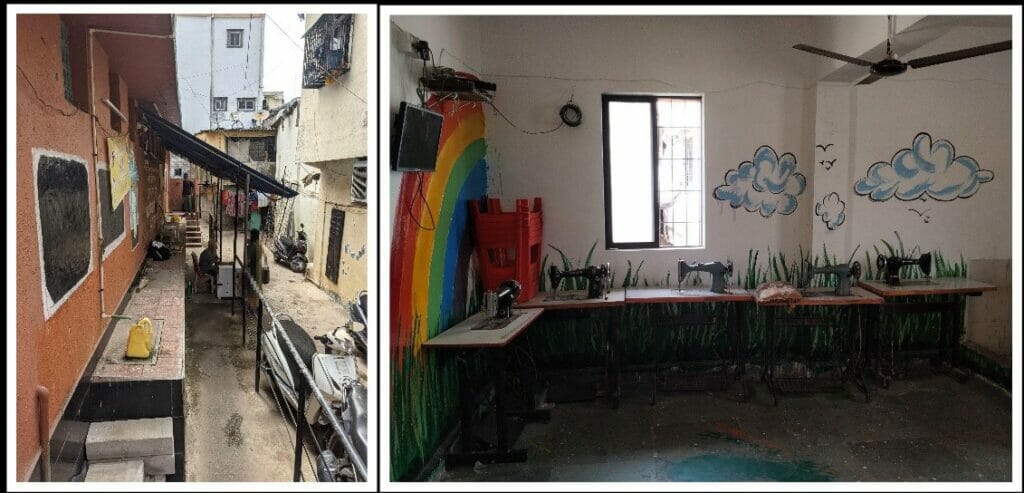
Toilets are a complex issue, hence there is a requirement for multi-stakeholder partnerships and strengthening community participation. Some immediate actions required are:
- Prioritising construction of toilets in the peripheral clusters based on soil profiling and solid and liquid waste linkages
- Focusing on non-functional toilets and ensuring they are made operational before constructing new toilets
- Designing better desludging and maintenance structures for on-site containment systems and avoiding faecal sludge to dispose in water or in landfill or cause groundwater contamination
- Ensuring all toilets have municipal water supply and safe water and electricity
- Designing gender-inclusive toilets and making them safer for the elderly and people with disabilities.
Urgent attention is required for adequate and safe sanitation infrastructure to prevent public health challenges. Additionally, the community must be engaged to find speedy solutions and address capacity gaps. Shivaji Nagar needs a solution tailored to the requirements of the community.